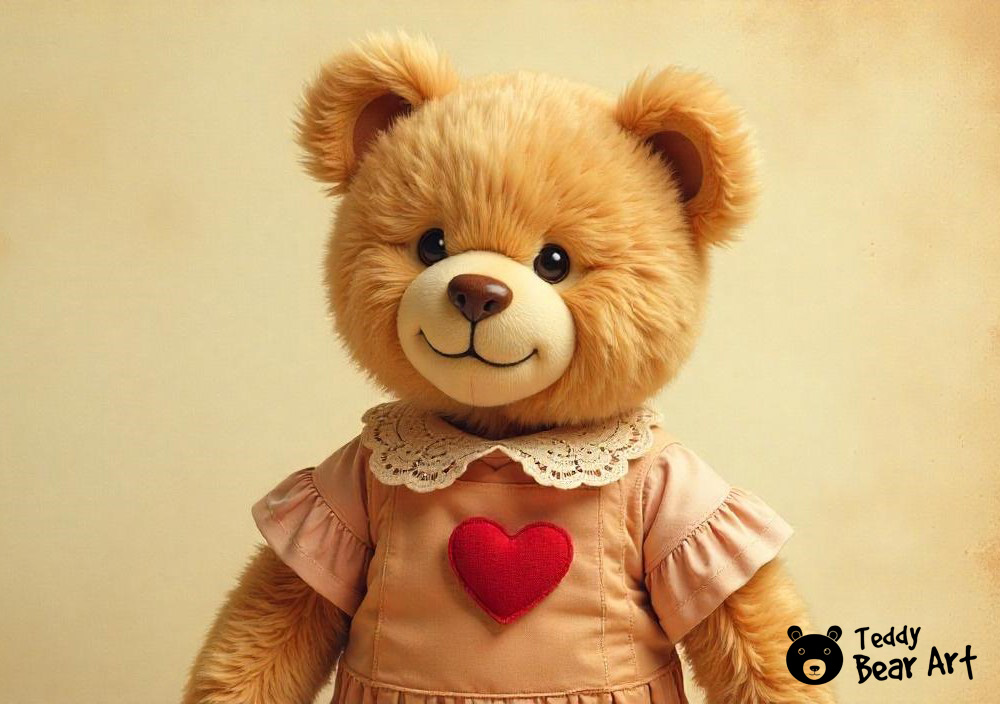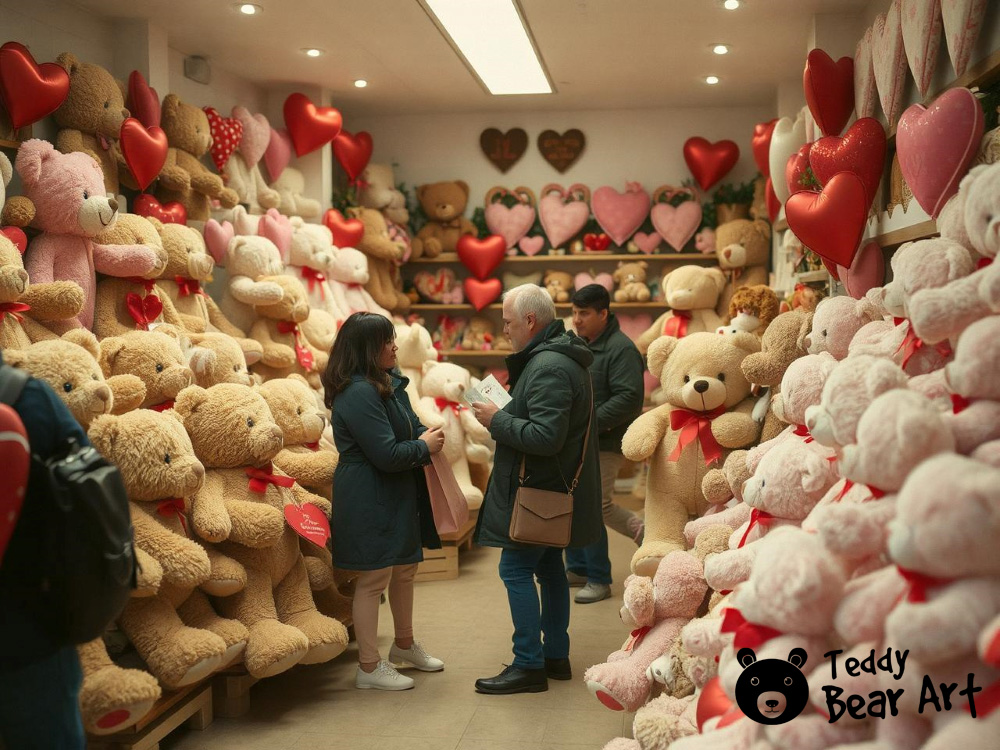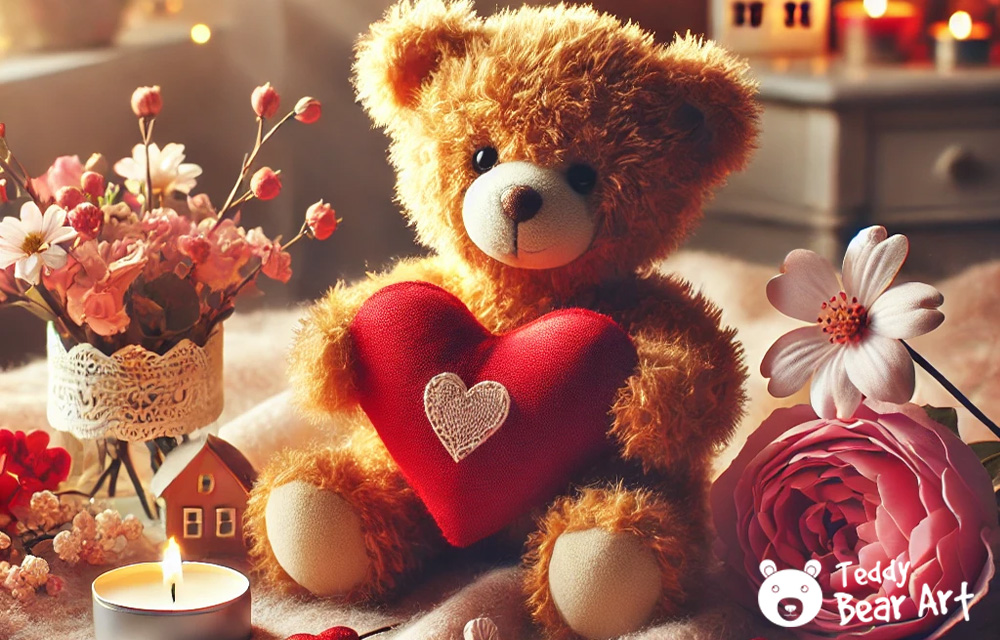Few gifts evoke the warmth and sentiment of Valentine’s Day quite like a Valentine’s teddy bear. Often clutching a heart or dressed in charming attire, teddy bears are more than just cuddly companions; they carry a rich history and have become enduring symbols of love and affection. Let’s explore how these beloved plush toys intertwined with the most romantic day of the year.
The Origins of the Teddy Bear
The story of the teddy bear begins in the early 1900s, with two parallel tales from opposite sides of the globe. In the United States, President Theodore “Teddy” Roosevelt’s hunting trip famously inspired a cartoon depicting him sparing a bear cub. This heartwarming image led to the creation of the first “Teddy’s Bear” by Morris Michtom, a Brooklyn shopkeeper. Meanwhile, in Germany, Margarete Steiff, a pioneering toymaker, and her nephew Richard Steiff designed plush bears that captured hearts worldwide.
From their inception, teddy bears became symbols of comfort and sentimentality. Their soft, endearing nature made them perfect for expressing emotions, paving the way for their role in Valentine’s Day traditions.

How Teddy Bears Became a Valentine’s Day Staple From
The transformation of the teddy bear from a childhood companion to a symbol of romance is thanks to marketing, cultural shifts, and evolving gift traditions.
The Role of Marketing in Popularizing Teddy Bears
In the mid-20th century, retailers began heavily promoting teddy bears for Valentine’s Day. Stores decorated their windows with romantic scenes featuring teddy bears, and manufacturers introduced gift sets that included bears alongside chocolates, flowers, or cards. One of the earliest marketing slogans targeted at adults was “Hug Me Forever,” hinting at the teddy bear’s ability to convey affection, even from afar.
An interesting fact: By the late 1960s, major toy brands collaborated with fashion designers to create teddy bears dressed in satin gowns or heart-themed costumes, giving them a unique and luxurious appeal.
Teddy Bears in Advertising
Television commercials of the 1980s elevated the teddy bear’s popularity to new heights. In one memorable ad, a bear held a sign saying “I Love You” and “hugged” its owner, becoming a symbol of a gift that speaks volumes without words.
Fun fact: These campaigns inspired phrases like “hug in a box,” which became synonymous with teddy bears as heartfelt gifts.
Technological Innovations
With the rise of technology, teddy bears evolved further. Talking bears became popular in the 2000s, programmed to say prerecorded messages like “You’re my love” or even personalized names.
Did you know? Some companies introduced bears with small pockets designed to hold handwritten notes or even engagement rings, making them perfect for surprise proposals.
The Psychology of the Gift
Giving a teddy bear to an adult is more than a cute gesture—it’s a way to evoke nostalgic feelings of safety and comfort from childhood. Psychologists refer to such gifts as “emotional bridges,” connecting romantic sentiments with the warmth of childhood memories.
Exclusive Valentine’s Teddy Bears as Collectibles
In recent decades, limited-edition teddy bears created especially for Valentine’s Day have become sought-after collectibles. These bears often feature intricate designs and premium materials. For instance, Steiff regularly releases bears with gold-thread embroidery, making them a coveted gift for collectors.
Teddy Bears as a Means of Charity
Many brands associate teddy bear sales with charitable causes. For example, a portion of Valentine’s Day bear sales is often donated to support children in need, adding even more meaning to the gift.
One example: The “Buy a Bear, Share the Love” campaign by Build-A-Bear Foundation helps thousands of children every year.

Why Valentine’s Teddy Bears Hold Special Meaning
The Symbolism of a Teddy Bear
A teddy bear on Valentine’s Day carries a unique symbolism. It’s not just a gift; it’s a gesture that represents care, comfort, and enduring love. Unlike flowers that fade or chocolates that disappear, a teddy bear remains, serving as a tangible reminder of the giver’s affection.
Heartwarming Valentine’s Teddy Bear Stories
There are countless stories of teddy bears playing pivotal roles in romantic moments. Take, for instance, a couple in California who used a giant teddy bear to hide an engagement ring, leading to a surprise proposal that went viral. Or the story of a handmade Valentine’s teddy bear gifted to a soldier overseas, offering a piece of home and love during a difficult time.
Such tales showcase how these plush companions become part of deeply personal and unforgettable memories.
A Timeless Gesture of Love
Teddy bears have cemented their place in Valentine’s Day traditions for a reason. They embody warmth, joy, and a sense of security that’s hard to replicate. Whether given as a simple token of affection or as part of an elaborate romantic gesture, Valentine’s teddy bear remains a gift that speaks straight to the heart.
So, as you plan your Valentine’s Day, consider the enduring charm of a teddy bear. Not only will it bring a smile to your loved one’s face, but it will also serve as a lasting reminder of your love and thoughtfulness.
Discover More Teddy Bear Treasures
Dive deeper into the world of teddy bears with these delightful reads:
- What is the First Teddy Bear? A Deep Dive into Its Creation and Impact
Explore the fascinating origins of the first teddy bear and its journey to becoming a global symbol of comfort and joy. - Benefits of Having a Teddy Bear
From emotional support to decorative charm, discover why a teddy bear is more than just a cuddly companion. - 10 Creative Teddy Bear Picnic Ideas for a Perfect Day Out
Turn an ordinary outing into a magical experience with these fun and creative teddy bear picnic ideas.
Thank you to DALL·E from OpenAI, and Freepik for providing the tools used to create all the images featured in this post. The images were modified.
Get Free Patterns & Be the First to Know!
Want free teddy bear patterns, exclusive tutorials, and a chance to win craft supplies?
Sign up for our newsletter using the subscribe form in the middle of this article to receive new patterns, insider tips, and the latest news on teddy bear art. You’ll also automatically be entered into our annual giveaway for a chance to win teddy bear crafting materials.
Bonus entry: Save one of our pins on Pinterest to increase your chances of winning!
Let’s create, inspire, and craft beautiful teddy bears together!


This article beautifully captures the charm and sentimentality tied to Valentine’s teddy bears. It is amazing how such a simple gift carries so much emotional weight, evolving into a timeless tradition. The connection between teddy bears and comfort is well-documented, but I wonder—what role does cultural influence play in the choice of teddy bears as a symbol of love? For example, are there regions where different symbols or gifts carry the same emotional resonance as the teddy bear does in Western cultures?
It’s also interesting to think about how the design and messaging of these bears have changed over time. From classic designs to bears holding LED hearts, the evolution mirrors how society’s expression of love has modernized. Does this signify a shift in the way we value timelessness versus trendiness in romantic gestures?
Lastly, given the growing interest in sustainable gifting, I’d be curious to see how the teddy bear industry is adapting. Are eco-friendly or handmade bears gaining traction, and do they offer a more personalized connection compared to mass-produced alternatives?
Very interesting questions! Teddy bears, as a symbol of love, indeed have a deep connection with cultural traditions, especially in Western countries where they are often associated with warmth and care. In other parts of the world, there are other symbols of love and gifts that carry emotional significance as well. Indeed, different cultures have their own unique symbols of love and affection. For example, in Japan, gifts featuring Hello Kitty and other kawaii characters are popular. In Scandinavia, traditional symbols of love often take the form of handmade knitted items.
As for the evolution of bear designs, you’re right that over time they have become more modern and innovative. The emergence of teddy bears with LED hearts is a great example of how traditions adapt to new technologies and trends. This may also reflect the modern desire for originality and novelty in expressing emotions. We seem to appreciate not only timelessness but also the opportunity to bring something unique and non-standard into a gift.
With the growing interest in sustainable and mindful gifting, the teddy bear industry is indeed starting to focus on more eco-friendly and personalized options. Many brands now offer eco-conscious materials, as well as handmade bears, which create a closer connection with the buyer. These bears are often considered more unique and meaningful, as their creation involves a personal touch and attention to detail.
What a wonderful article! It explains so well how Valentine’s Day teddy bears have become symbols of love and comfort. It’s interesting to see how they transformed from childhood toys to romantic gifts due to marketing and cultural shifts. The stories about their origins add special historical value.
I particularly enjoyed how teddy bears adapted to modern trends, from carriers of messages to part of proposals. The explanation of why they mean so much to adults was touching—it’s not just toys, but a source of comfort and nostalgia.
The section on collectible bears and charitable campaigns showed how these toys combine luxury with care for others. The whole article is a reminder that teddy bears are not just gifts, but gestures of love and care.
Thank you for your kind words! I’m so glad you found the article interesting. Indeed, Valentine’s Day teddy bears are not just cute toys, but real symbols of love and care. I also find it fascinating how teddy bears have become part of cultural and romantic traditions, with such interesting facts behind their history.
You’re right, teddy bears don’t just evoke nostalgia, but also provide emotional comfort, which is so important for us adults. What do you think about collectible bears? I believe their exclusivity and connection to charitable projects only add to their value.